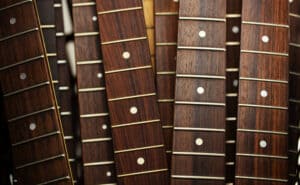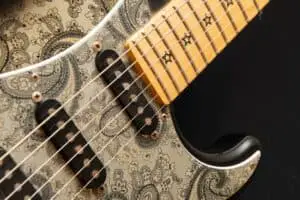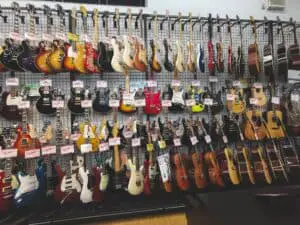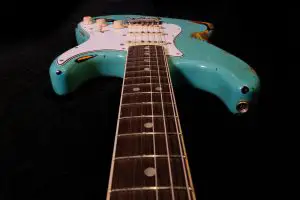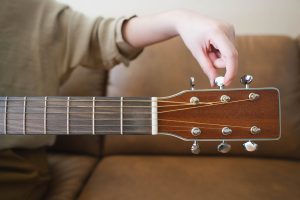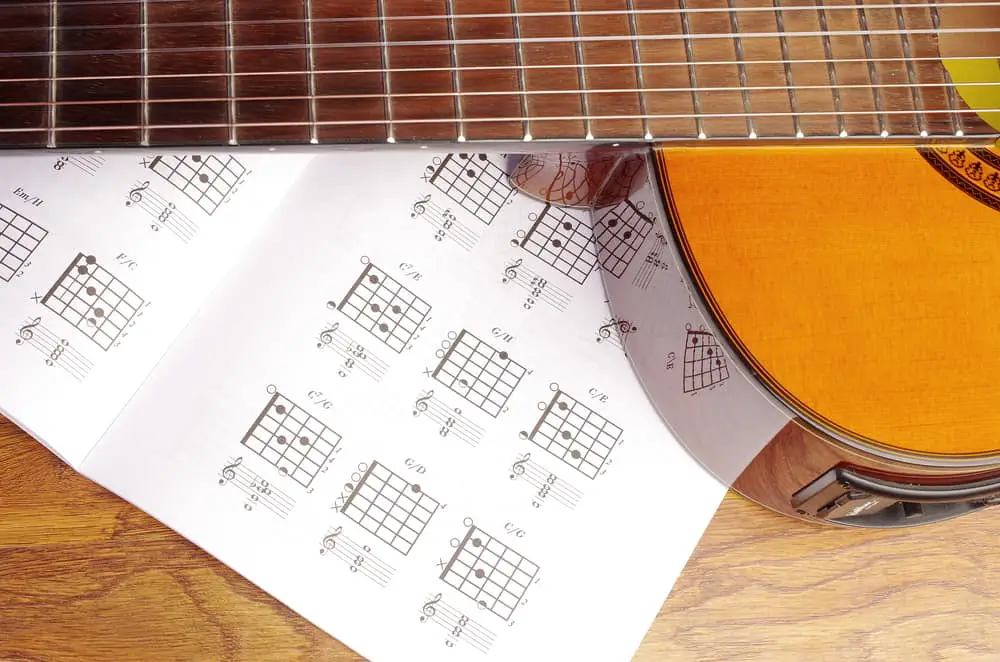
Playing guitar is fun, but understanding the guitar is tricky. You may learn to play the guitar in six months, but to master every aspect of the guitar, you will have to spend years practicing it. And to master guitar, you need first to understand how to read sheet music. So, do you know how to read guitar chords on sheet music? If not, we are here to help you.
Unlike other instruments and the lead part of the guitar, we use chord boxes to display chords on sheet music. The chord boxes contain vertical strings, and they are pretty easy to understand if you even know the basics of music.
However, to know about the chords on sheet music, you will have to enter the depth of this article.
Below, we will introduce you to how you will be able to read guitar chords on sheet music. So, if you are a new guitarist with an urge to understand the chords on sheet music, this article will help you.
What Is Sheet Music?
In simple terms, sheet music is the written form of music notations that musicians use during their live performances and recordings. The sheet music creates musical symbols to define pitches, chords, tabs, and rhythm. Along with it, sheet music works as a guide for musicians to help them hit the right note at the right time.
The Basics of Reading Guitar Chords on Sheet Music
If you are an absolute beginner and want to learn how to read guitar chords on sheet music, then there are two basic types of chords that you need to learn. First, the open chord, and second, the barre chord. Below you will be illustrated how you will read both of these chords on sheet music.
The Open Chord on Sheet Music
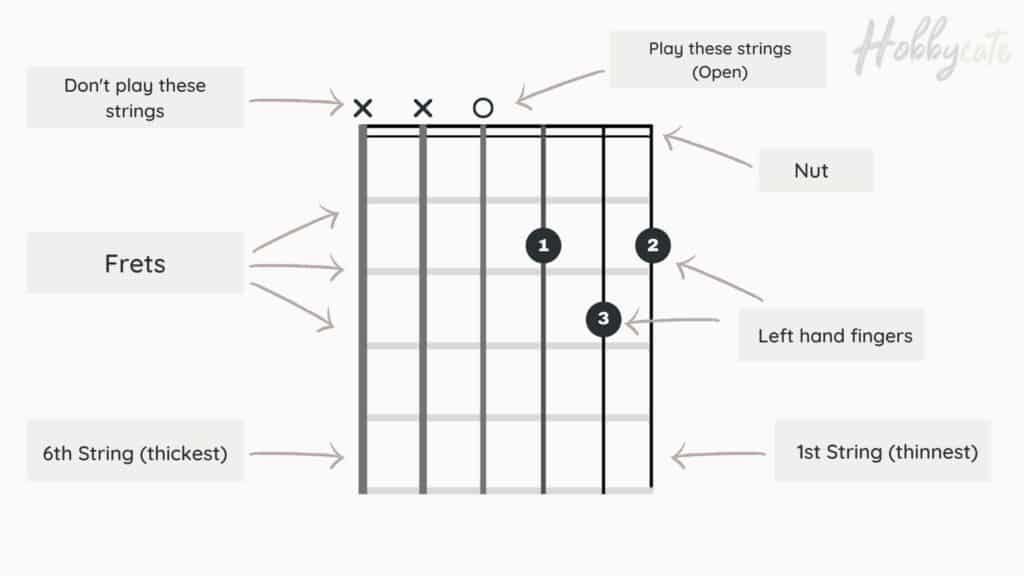
You will find a fretboard-type diagram on sheet music as attached above. The double black line is the nuts of the guitar. This is the part where strings meet the head. The boldest vertical line on the left is the E string, followed by other strings.
The numbers written on the strings represent the placement of your fingers. The O means that the strings need to be played open, and when you see X, it means that the string will be muted in this chord. Lastly, the horizontal lines represent the frets of your guitar.
The Barre Chord on Sheet Music
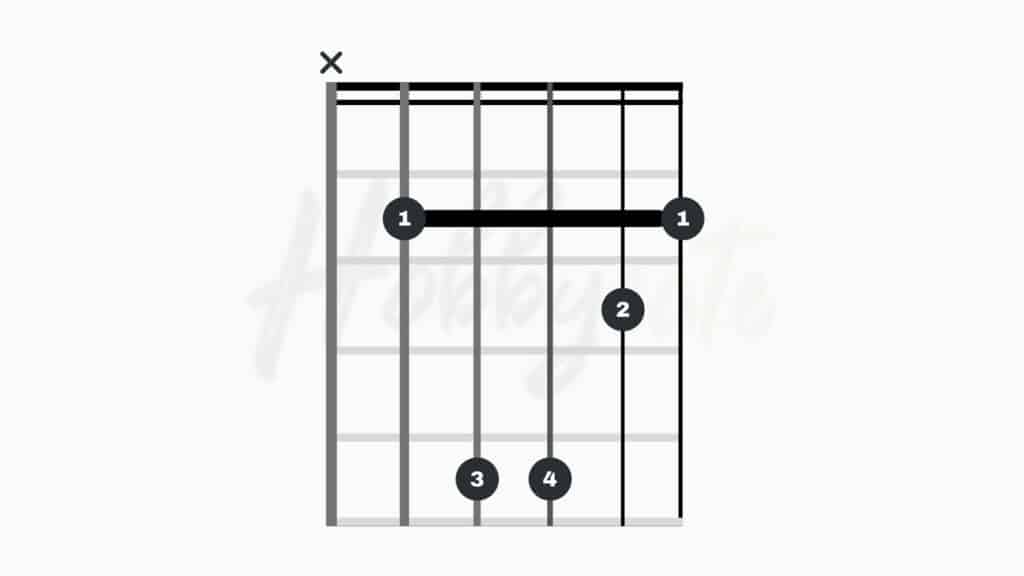
As seen in the picture above, everything else is the same as the open chord, but you will witness a bold vertical line cutting through all five strings, excluding E. The line is on the second fret, which means that you need to put your finger on all those strings on the second fret and play this chord as a barre chord.
Double Lines on Sheet Music
One of the most asked questions by amateurs is why we have a double line representing the nut on some chord boxes while some start with a single line. The reason is simple; the double line represents that the chord starts from the first fret. When the double line is missing, it means that you will have to go down to play that particular chord.
Now, how would you know how down you have to go and at what fret will this chord be played?
For this, you need to see the sides of the fret, and you will get a number written out there. That number represents the fret. This is why some chords on sheet music have double lines, and some do not.
Conclusion
In summary, it will not be incorrect to say that how to read guitar chords on sheet music has finely been defined in this article. Above, we have explained what sheet music is and elaborated on almost everything about reading guitar chords on sheet music. However, if you still feel any confusion, knock on our door. We are always here to help you out.
Frequently Asked Questions
Yes, you can indeed play the guitar without having sheet music. Even a lot of musicians do not use the sheet music for their live gigs either. For this, you only need to have a lot of practice and a good memory to remember what note to hit at what time.
Yes, it is different for all instruments. Even if you are talking about guitar only, the sheet music will differ depending on what you are going to play. There is different sheet music for chords, strumming, and tabs. So, you will never have the same sheet music for different tasks of different instruments.
Well, there is no hard and fast rule that you must learn standard notation. However, if you are a fan of classical or jazz music, then understanding standard notation will be necessary for you. Because all the written material you will get will be in standard notation.


